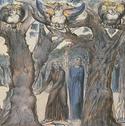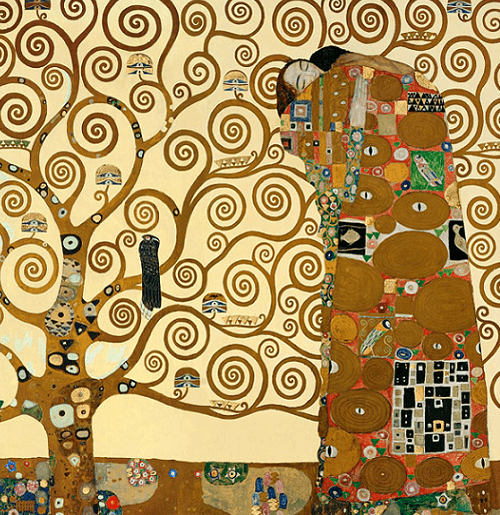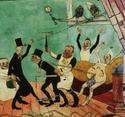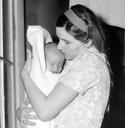Thomas DuBay S.M.,
Happy Are Your Poor: The Simple Life and Spiritual Freedom
(San Francisco: Ignatius, 1981, 2nd ed. 2003
).
Father Thomas Dubay’s book Happy Are You Poor: The Simple Life and Spiritual Freedom is a simply-written book which can—and probably should—be searingly difficult to read. Even the most thrifty first-world readers will likely be convicted that they are, in many ways, like the camel that is unable to fit through the eye of the needle, comfortably consumed by the pursuit of things, money, and security, with a less-than-proper regard for the needy and impoverished. As a widely traveled conference and retreat speaker, spiritual director, and author, Fr. Dubay was well-familiar with the lifestyles of religious and lay Catholics throughout the country and even the world, and he observed that both parishes and religious communities seemed to be suffering from what he considered to be a problematic disregard for the Gospel teaching on poverty. He wanted to kindle a flame in the hearts of Catholics who already consider themselves to be sincere adherents to their faith, inspiring them to a deeper self-examination regarding their use of, and attachment to, material goods.
In the secular arena these days, simplicity sells. Magazines, books, and blogs proliferate with techniques and tips to help moderns awash in too much stuff achieve a more pared-down lifestyle. Happy Are You Poor is not a how-to manual, however. It is, instead, a systematic outline of a Christian’s proper relationship to material goods, whether they be lay, cleric, or religious. Dubay considered his analysis to be a distillation of the New Testament’s teachings and stated confidently that anyone who disagrees needs to debate with the Scriptures themselves rather than with his analysis.
Given the innate human distaste for filth and utter squalor, which is often the image that comes to mind when considering “poverty,” the book first takes the important step of clarifying what Gospel poverty is not. The ideal of poverty enshrined in the Gospel is not that of destitution—indeed much of the texts on the poor involve the rich giving what they do not need to the poor to free them from the prison of their destitution. It is also not a stoic insensitivity to that which is beautiful or good for human health. Gospel poverty, is, at the same time, not merely economizing in one’s use of money and goods, or even a healthy detachment from these goods. Both are important and admirable qualities, but might be considered only stepping-stones on the way to authentic Gospel poverty. Dubay also disagrees with those who suggest the poverty of the Gospel should be “reinterpreted” away from literal frugal living and towards a more analogical impoverishment of generosity with time and talent, or simply being good stewards of creation.
The secular heralds of minimalism and of clean, attractive, simple living, might seem to be in agreement with the idea that the “simple life” referred to in the title of this book brings freedom. Yet it seems that simplicity embraced entirely for the sake of cleaner surfaces and clearer spaces is overly self-focused. “Fold your socks, tidy your toys, purge your closets, and YOUR life will be better, freer, and easier,” reads the gospel according to Simple. But, as Father Dubay points out, the life of a follower and imitator of Christ is essentially other-focused. If I pare down my life, according to the ways of the Gospel, it is not done simply for the sake of me, myself, and I. Gospel poverty is a lifestyle lived for the sake of the other—whether that other be God or man. First and foremost, material simplicity should enable a radical openness to God and a readiness to respond to His inspirations that is difficult to achieve when one is weighed down by vain concerns regarding passing styles or world-impressing accessories. “God,” notes Fr. Dubay, “forces himself on no one. If I cling to things, he lets me have my things. If I am empty of things, he fills me with himself” (164). Further, a sparing and modest use of food, clothing, and shelter enables a sharing of resources, time and talent with the poor. Finally, “to be credible in our modern age, a person must visibly demonstrate personal integrity in the small details of everyday life” (73). One’s detachment from the things of this world speaks more eloquently than many words regarding the reality of eternal communion with God, and how to orient a life in that direction.
In lieu of personal experiences—Dubay gives no anecdotal sketches of what his own closets or shelves look like—the book provides extensive lists of questions that serve as personal examens, and that can be applicable to the laity, clergy, and religious alike. This is significant—the author insists that there is no distinction in the Gospel call to poverty for these different states of life, although there may be different levels of radicality appropriate to each. The use of questions rather than personal anecdotes also allows the book to be less an authorial self-enshrinement and more a springboard into prayer and consultation with the Holy Spirit, for the reader interested in sincere self-reform. The closest the book gets to practicalities is through the examples of the saints whose lives are described as illustrations of how to live Gospel poverty in a variety of circumstances.
As a sincere and open reader myself, this book stands as a healthy challenge to my attachments and my desire to cling to self-serving superfluities and pleasures. Yet, as a wife and mother, concerned with the day-to-day survival and flourishing of four children under age nine plus one busy husband, I feel that I am frequently immersed in only material concerns—ensuring everyone has clothes that fit, meals that nourish, books that teach well, a house that’s clean. In my busyness I am more often tempted not by vain displays of elegance but by unthinking, uncaring utilitarianism. It’s simpler to throw a weekday meal on the table than to celebrate a saint’s feast day with thoughtfully arrayed dishes and a special treat. It’s easier to dress down for Mass than to dress up in more costly clothes that might be stained or torn. It’s significantly cheaper—in terms of both time and money—to send my children to public school, rather than to purchase our own carefully considered books and curricula in order to pursue an education at home. I could possibly deceive myself, with an incorrect reading of Gospel poverty, that a desire for the simple life would dictate the clear answer to these alternatives. But the simpler, easier, and cheaper choices in these situations, and others that come up every day, is not always the best. Right now, what this mother needs most of all is guidance for a heart that must often discern between appropriate, nurturing, inspiring beauty and that which is superfluous and unnecessary. Dubay’s book begins to speak to this, but it is not a fully fleshed-out answer to this particular dilemma.
Carla Galdo, a graduate of the John Paul II Institute, lives with her husband, three sons and daughter in Lovettsville, Virginia.
Carla Galdo is a graduate of the John Paul II Institute, a leader of the national Catholic women’s book group Well-Read Mom, and a student in the Master of Fine Arts in Creative Writing at the University of St. Thomas-Houston. She lives with her husband, four sons and two daughters in Virginia.



